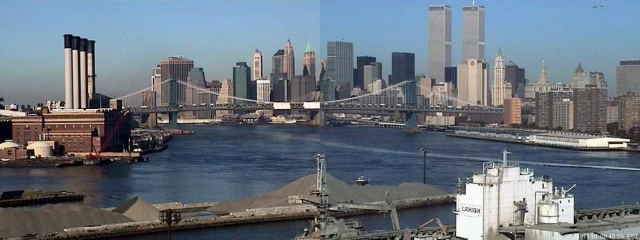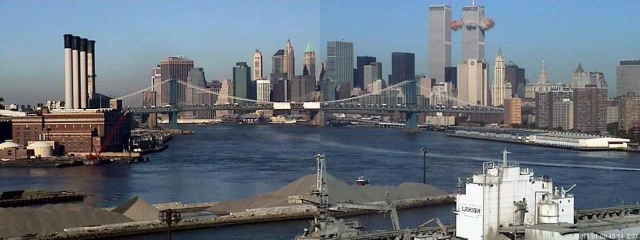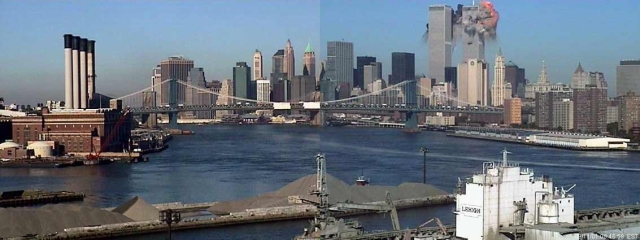Wolfgang Staehle



Still images of “Untitled“. Single Channel Video. 2001
Note on “Untitled”:
Wolfgang Staehle, a German-born Internet artist, set up two cameras in an apartment window in Williamsburg, Brooklyn, both pointed at the skyline of Lower Manhattan. As part of an art project he called “2001,” Staehle had carefully calibrated the cameras’ shutters to trip at four-second intervals, hour after hour, day after day, automatically snapping postcard-style stills of the city. Staehle’s panoramas would then be transmitted over the Internet to twin film projectors, their beams directed at the wall of a West Side gallery. Gallery patrons would then view the changing electronic mural in virtual “real time,” as theatre-goers might view a wide-screen movie, twenty-four-by-nine-feet. Every four seconds, the scene would shift. A boat or a cloud would seem to twitch. The sun would meander across the cityscape and its apron of bridges. The webcams would capture the metropolis in a Zen-like state, subtly coming to life over the course of a morning. That is, until 08:46:50, on September 11. At that instant, as evidenced by the time code in the lower right-hand corner of the frame, Staehle’s cameras happened to catch an aircraft approaching the north tower of the World Trade Center, then its impact, then the explosion. Unwittingly, he had documented the first salvo of the deadliest terrorist strike in American history, a series of attacks which would claim the lives of nearly 3,000 people in a coordinated assault by four teams of suicide hijackers from the extremist Islamist faction, al-Qaeda.
What mesmerized each observer, surely, was the gravity of sudden death, in numbers of such magnitude. But they were also gripped by the pure visual spectacle—by the sense that this irreconcilably infernal scene was somehow meant to be seen. Skyscrapers, along with the hundreds and hundreds of lives within them, were being ravaged, with passenger planes, in order that the violence be witnessed. Terrorism, by definition, demanded frightened eyes. In turn, the horror literally had to be seen, and seen again, to be believed. The attacks, in fact, were considered the most photographed breaking news event in human history, witnessed on television and the Internet that day by an estimated two billion people—a third of the human race. And if this abundance of imagery offered any sort of certainty, it was this: that in this camera-laden age, history’s revisionists would find it nearly impossible to erase the event from civilization’s conscience. We had the goods; we had the pictures. Photographs provided a baseline that would make it much more difficult for the public record to be challenged in years to come.
“Empire 24/7″ – 2001
Image of the Empire State Building streamed live over the internet. Imitating Andy Warhol’s piece of the same name; this incarnation questions the nature of the ‘live’ (yet mediated) image. Does the ‘live’ image render previous art forms obsolete? Encountering this image within a gallery (as oppose to on television or on the web) is its nature of representation.